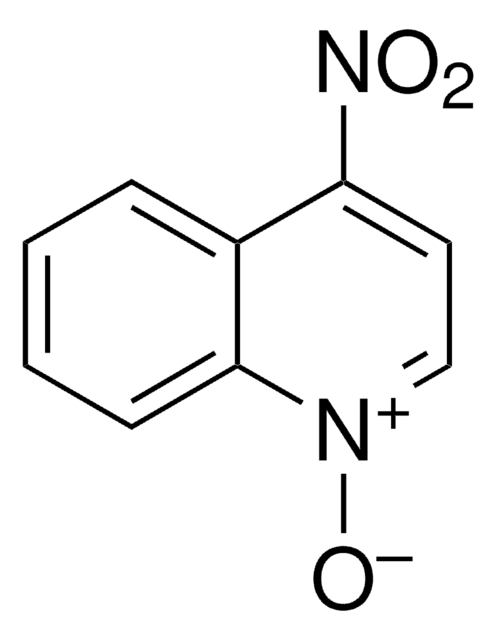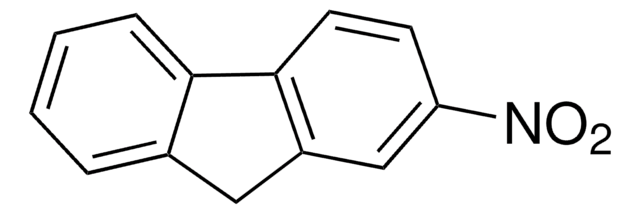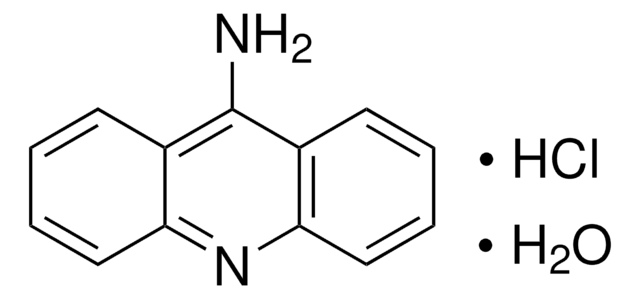I3636
Acridine Mutagen ICR 191
Synonyme(s) :
6-Chloro-9-[3-(2-chloroethylamino)propylamino]-2-methoxyacridine dihydrochloride
About This Item
Produits recommandés
Solubilité
DMSO: soluble
Adéquation
suitable for Ames test in Salmonella and E. coli (Frameshift mutagenic standard)
Température de stockage
2-8°C
Chaîne SMILES
Cl[H].Cl[H].COc1ccc2nc3cc(Cl)ccc3c(NCCCNCCCl)c2c1
InChI
1S/C19H21Cl2N3O.2ClH/c1-25-14-4-6-17-16(12-14)19(23-9-2-8-22-10-7-20)15-5-3-13(21)11-18(15)24-17;;/h3-6,11-12,22H,2,7-10H2,1H3,(H,23,24);2*1H
Clé InChI
LMEMIKWTNPWYMI-UHFFFAOYSA-N
Vous recherchez des produits similaires ? Visite Guide de comparaison des produits
Catégories apparentées
Mention d'avertissement
Danger
Mentions de danger
Conseils de prudence
Classification des risques
Acute Tox. 1 Inhalation - Acute Tox. 2 Dermal - Acute Tox. 2 Oral - Carc. 1B
Code de la classe de stockage
6.1A - Combustible acute toxic Cat. 1 and 2 / very toxic hazardous materials
Classe de danger pour l'eau (WGK)
WGK 3
Point d'éclair (°F)
Not applicable
Point d'éclair (°C)
Not applicable
Équipement de protection individuelle
Eyeshields, Faceshields, Gloves, type P2 (EN 143) respirator cartridges
Certificats d'analyse (COA)
Recherchez un Certificats d'analyse (COA) en saisissant le numéro de lot du produit. Les numéros de lot figurent sur l'étiquette du produit après les mots "Lot" ou "Batch".
Déjà en possession de ce produit ?
Retrouvez la documentation relative aux produits que vous avez récemment achetés dans la Bibliothèque de documents.
Les clients ont également consulté
Notre équipe de scientifiques dispose d'une expérience dans tous les secteurs de la recherche, notamment en sciences de la vie, science des matériaux, synthèse chimique, chromatographie, analyse et dans de nombreux autres domaines..
Contacter notre Service technique

![Benzo[a]pyrène ≥96% (HPLC)](/deepweb/assets/sigmaaldrich/product/structures/253/820/be96d879-1811-46c0-8f11-612019691c2d/640/be96d879-1811-46c0-8f11-612019691c2d.png)










